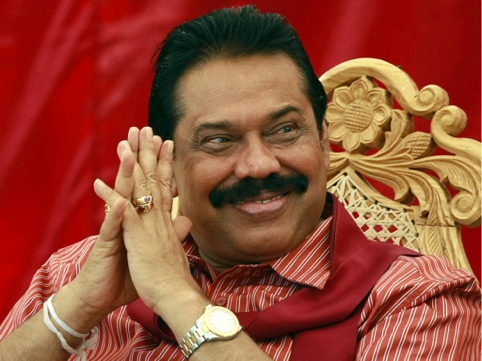The Sri Lanka presidential elections were held on January 8, 2015, two years ahead of schedule. The incumbent President Mahinda Rajapaksa was the candidate for the United People’s Freedom Alliance Party (UPFA) seeking a third term in office. Minister of Health in Rajapaksa’s administration and former ally, Maithripala Sirisena defected to the United National Party
(UNP) opposition coalition to challenge his friend and former boss in the presidential elections.
Mr. Rajapaksa, who had been in power since 2005 was credited for ending the civil war and boosting the economy. He had begun to loose goodwill from the citizens after being described as increasingly authoritarian and corrupt, thereby failing to tackle the legacy of Sri Lanka’s civil war, which left some areas of the North impoverished and embittered.
There was speculation that Rajapaksa would call another early presidential election in mid 2014. On 20 October 2014, the Minister of Mass Media and Information, Keheliya Rambukwella confirmed that the election would be held on January 2015. His decision to run for a third term was met with protests across the country.
The Bar Association and critics of Rajapaksa claimed that he could not stand for re-election as he had won his second term before the eighteenth amendment was passed. However, the Parliament which was controlled by Rajapaksa’s party, passed the eighteenth amendment to the constitution, removing the two-term limits on presidents allowing Rajapaksa run for a third term. In early 2014, Rajapaksa turned to the Supreme Court to affirm his decision to stand for re-election. The Supreme Court affirmed his decision. This decision came as no surprise as the independence of the Supreme Court had been questioned since Rajapaksa’s United Freedom Alliance Party impeached the former Chief Justice, Shirani Bandaranayake allowing Rajapaksa appoint his ally and legal adviser, former Attorney General Mohan Peiris, as Chief Justice.
In the run up to the elections, Maithripala Sirisena who had been Minister of Health in Rajapaksa’s administration, defected to the opposition coalition and was revealed as the common opposition candidate for the United National Party. Sirisena immediately received support from former president Chandrika Kumaratunga and other top officials in Rajapaksa’s administration who had defected alongside him. As elections got closer, the United People’s Freedom Alliance Party witnessed more defections to the opposition coalition in support of Sirisena. The leaders of the Tamils and Muslims, the biggest minorities had promised to support Sirisena, it was believed that this support swung the votes his way but the votes had been more anti-Rajapaksa than pro-Sirisena. The Sinhalese majority, who had voted for Rajapaksa in previous elections, also affirmed their support for Sirisena.
Sirisena released his manifesto, promising Sri Lanka citizens compassionate governance and a stable country. The main pledge in his manifesto promised the removal of the executive presidency and replacement with the Westminster style cabinet with the needed support of the parliament to amend the constitution. Rajapaksa had maintained he wasn’t going to abolish the executive presidency but promised an amendment and the weakness in the parliamentary system, eliminated. Sirisena promised the establishment of independent commissions to oversee the judiciary, police, electoral department, Attorney General’s department and the Auditor General’s department. He also promised the strengthening of the Commission on bribery and corruption and the annulment of political diplomatic appointments. Populist measures in his manifesto also included a commitment to write off 50% of farmer’s loans, reduction of fuel prices by removing taxes and an increase in the salary of public servants. He made a commitment to re-appoint political victims of Rajapaksa’s administration.
Incumbent Rajapaksa believed he was going to win the elections and refused to imagine a scenario in which he lost. It was a surprise to witness Rajapaksa concede defeat towards the end of the elections after it was revealed Sirisena was leading. Before results were announced, Rajapaksa’s press officer said the president “concedes defeat and will ensure a smooth transition of power bowing to the wishes of the people”. Sirisena was declared the winner and sworn in hours after the results were announced. He received 51.28% of the votes cast compared to Rajapaksa’s 47.58%. The turnout was 81.52%, the highest turnout for a Sri Lankan presidential election and significantly higher than the 2010 presidential election. Sirisena won in 12 electoral districts and Rajapaksa won in the remaining 10.

Sirisena was sworn in as the sixth executive president before Supreme Court Judge K. Sripavan, which is against tradition. He refused to be sworn in by the Chief Justice Peiris, legal adviser and ally of Rajapaksa, who had been appointed after the controversial impeachment of the previous Chief Justice. After being sworn in, Sirisena maintained he would only serve one term.
The outcome of the elections came as a surprise to Sri Lankans, not only because they had a new president but that democracy had worked and the elections were not characterized by violence, rigging or intimidation which were features of past elections.


